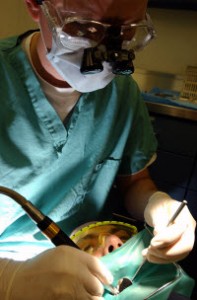 What Are The Signs That It Is Time For An Emergency Root Canal?
What Are The Signs That It Is Time For An Emergency Root Canal?
Knowing that your dentist has you covered for dental emergencies is very important. However, many patients are not sure when it is time for an emergency dental visit.
While root canals are common procedures the timing of the treatment matters to avoid the loss of a tooth or major dental work.
Here are some signs that it time for an emergency root canal.
What Is A Root Canal?
Teeth are made up of the hard exterior portion of the tooth that we see when we smile as well as the soft tissue within. When teeth become diseased and an infection sets in, that soft tissue is affected. It may become inflamed as it fights the infection, causing great pain. If the infection persists long enough, that soft tissue as well as the underlying bone tissue may die and decay which can lead to the loss of the tooth.
During a root canal procedure, the dentist removes the affected pulp within the tooth. The area is then cleaned and the pulp canal is sealed. This procedure is performed more than 15 million times each year in the United States.
Signs That An Emergency Root Canal Is Necessary
When a tooth is infected, there is increased sensitivity to temperatures, both hot and cold. As the infection worsens and moves to the bone, the area surrounding the tooth often becomes tender to the touch. Chewing food may trigger episodic pain. When left untreated, swelling may occur in the face as well as within the oral region.
If you experience these symptoms, you should call for a regular dental appointment as soon as possible. However, when the pain does not subside and continually increases while facial swelling does not subside, it is time to call for emergency dental care.
Is The Root Canal Done Right Away?
In some cases, an emergency root canal may be done immediately. However, depending upon the extent of the infection, the pain may be managed, the infection treated, and the root canal scheduled for a later date. The dentist will make the determination after an examination.
The best course of action is to act before your mouth begins to hurt. The chances of keeping your tooth are better the earlier treatment is sought. However, when a severe toothache occurs, it is best to come in as soon as possible to take care of the problem.
The good news is that we do emergency root canal treatment in Rochester, NY and are available 24/7.
 Toothaches come in many different forms, but are usually a sign that something needs to be checked by a dentist. When it comes to what actually causes toothaches, some common ones are gum infections, cavities, teeth grinding, infections, cracked teeth, and damaged fillings.
Toothaches come in many different forms, but are usually a sign that something needs to be checked by a dentist. When it comes to what actually causes toothaches, some common ones are gum infections, cavities, teeth grinding, infections, cracked teeth, and damaged fillings.
 Underneath the hard enamel of your teeth there are many living nerves. When your teeth decay there is the risk that the pulp and the nerves can become infected, killing the tooth off. One way to save a dying tooth is with
Underneath the hard enamel of your teeth there are many living nerves. When your teeth decay there is the risk that the pulp and the nerves can become infected, killing the tooth off. One way to save a dying tooth is with  Why You Should Have A Rochester Emergency Dentist On Speed Dial
Why You Should Have A Rochester Emergency Dentist On Speed Dial